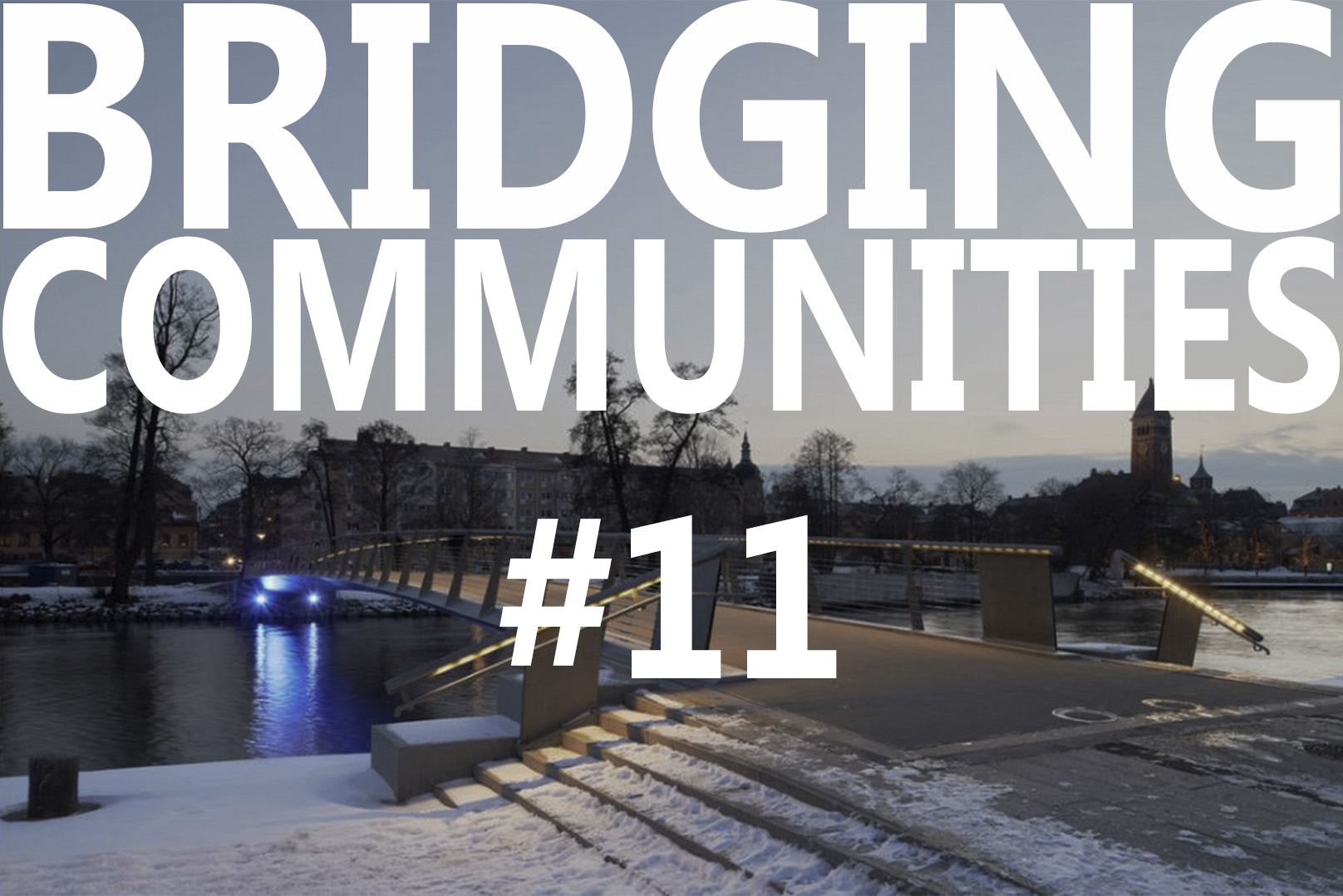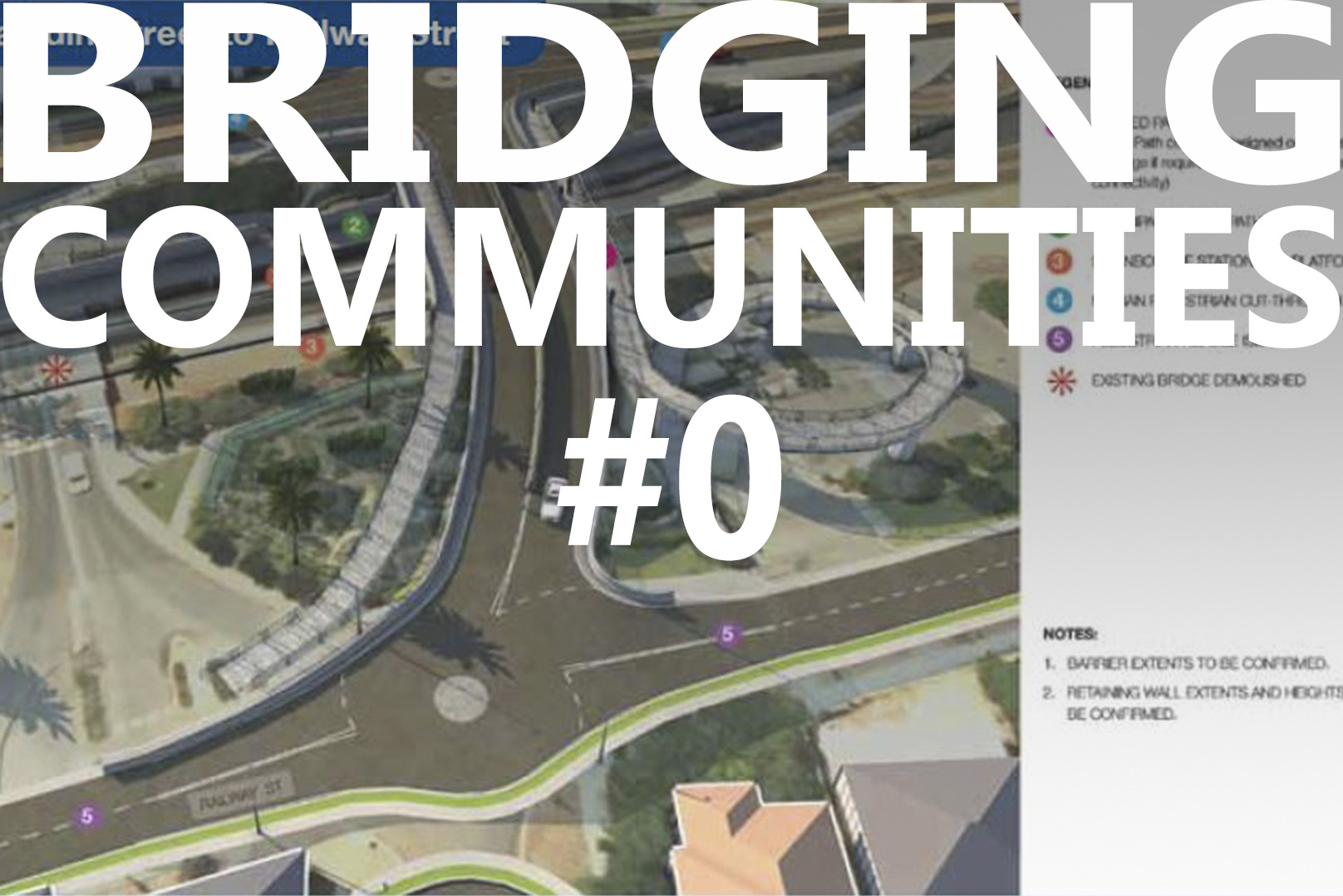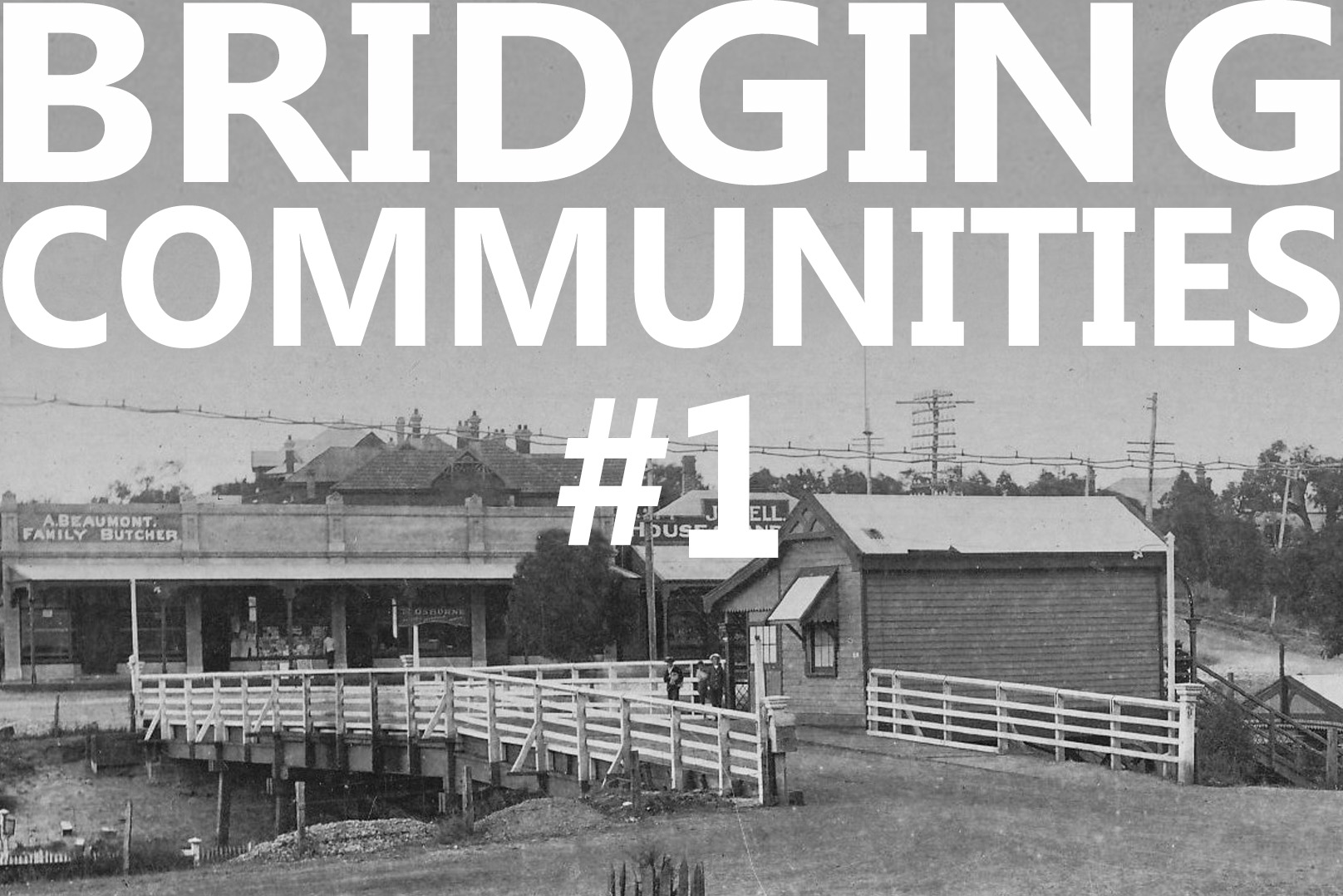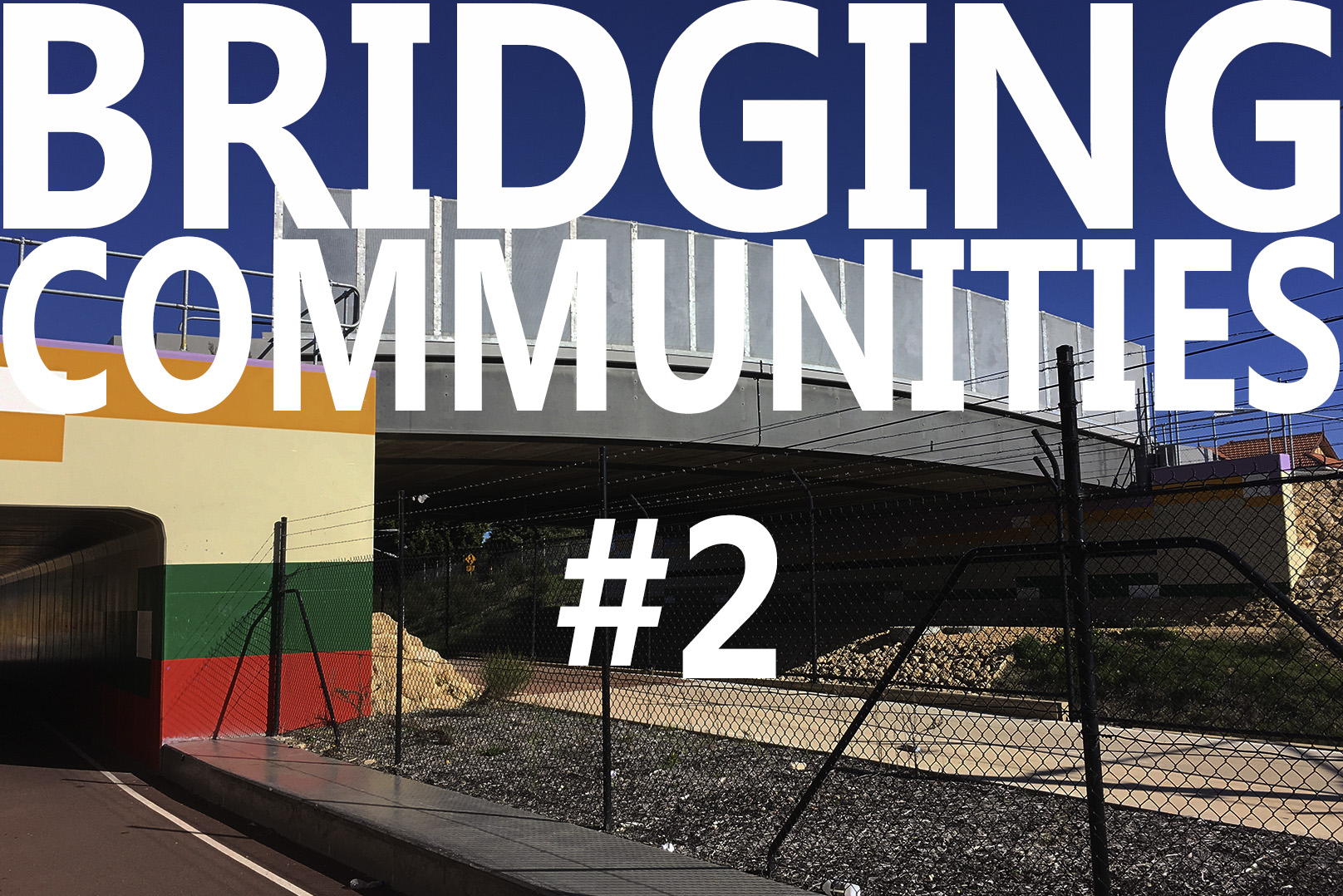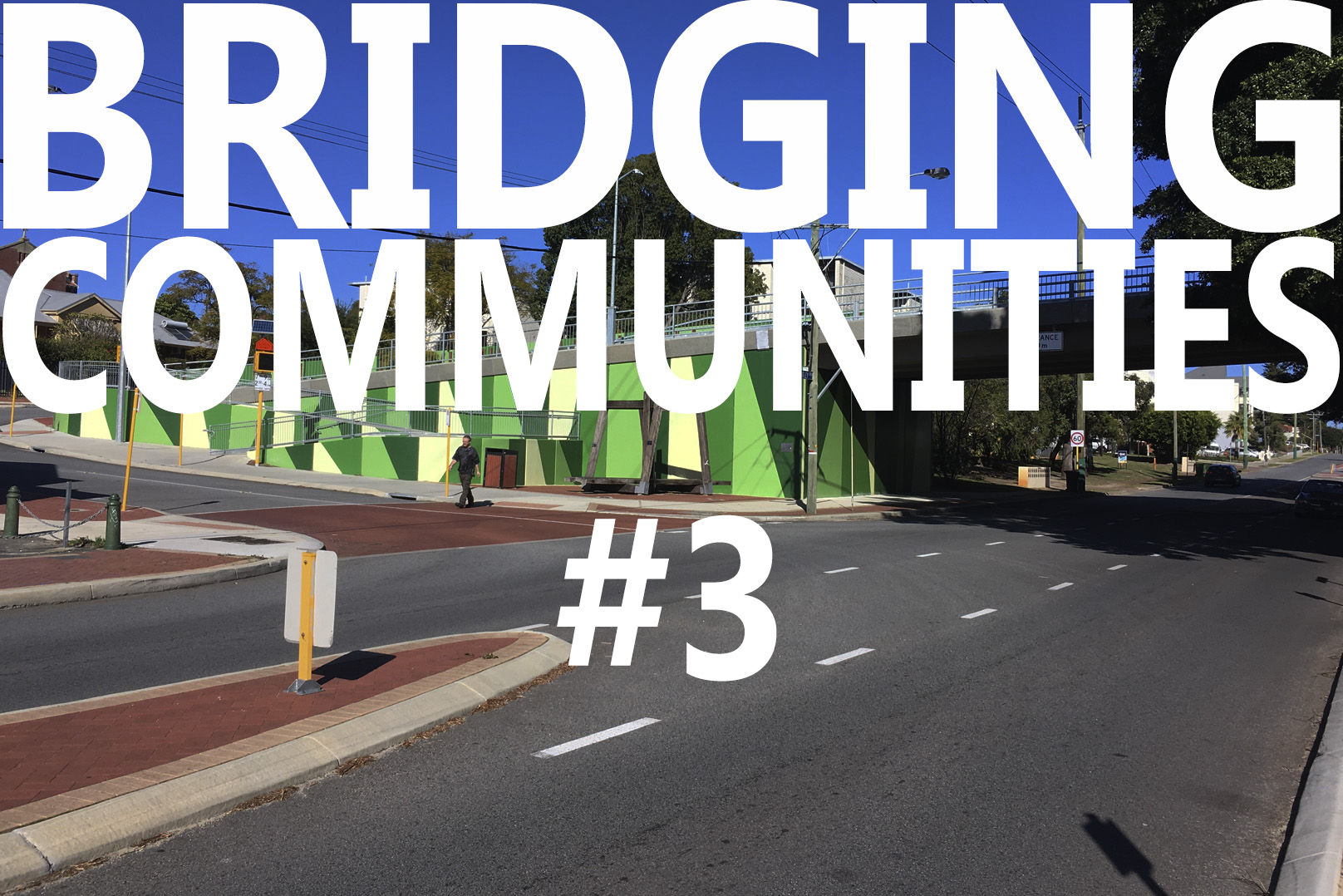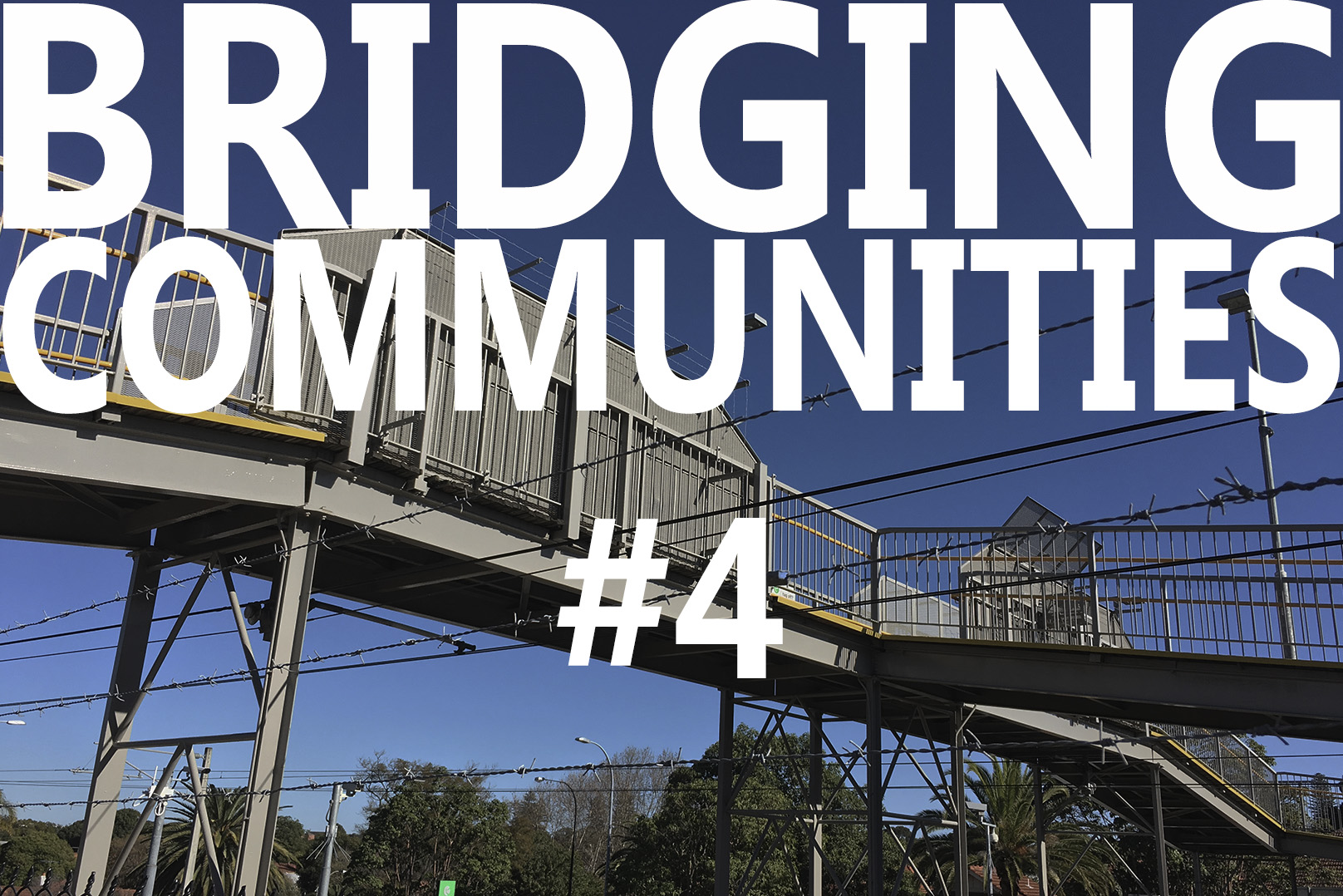Part of a series of posts by Neil Cownie on The Future of Swanbourne Village
While on the 2016 Dulux / Design Institute of Australia DIAlogue Scholarship tour we met with the Stockholm based architect Erik Andersson. We spent time in his office discussing his practice and projects before enjoying a beer together then onto dinner.
Andersson has won international design competitions for the design of several new bridges. Andersson has led design teams as an architect to deliver outstandingly simple solutions.
The Tulhus Bridge in Norway is one such multiple award-winning example. The design for the bridge came about following an invited architectural design competition.
The 72m long bridge serves pedestrians and cyclists and has an hour-glass shaped body tapering towards the centre. The core of the bridge is heated to keep it clear of snow, while the handrails conceal strip lighting.
The jury’s comments from the award-winning bridge as follows:
‘In one single graceful form, the Tullhus Bridge soars from the quayside in the north to the lush Stromsholmen in the south. Entirely in steel both in its artistic expression and its construction: designed with a secure hand that unites architecture and construction with conviction. It is a tour de force in the difficult art of austerity. Every measure, every angle, every meeting between two plates is extremely simplified, this highlighting the elegance of the design as a whole, which is impressive in a municipal construction project. The simplicity also hides the cleverness. The challenging thinness in the visible leap over 60 meters is made possible by the short side spans hidden inside the abutments, where the unusual air heating system also has been placed. The Tullhus Bridge seems so self-evident. It finds it’s place in its context humbly, while at the same time speaking in an original, contemporary language – without shouting!’
Images from Erik Andersson Architects website.
Go back to the The Future of Swanbourne Village
The Bridging Communities Series
- #0 The Precinct - Swanbourne Bridge
- #1 Old Swanbourne Bridge
- #2 Third Avenue Bridge
- #3 Seventh Avenue
- #4 Mt Lawley Station Bridge
- #5 Swanbourne Aboriginal History
- #6 Swanbourne European History
- #7 Swanbourne Hotel
- #8 Koombana Bay Bridge
- #9 BIG Bridge Copenhagen
- #10 Circle Bridge Copenhagen
- #11 Tulhus Bridge - Erik Andersson
- #12 RV73 Bridge - Erik Andersson
- #13 The Architect Bridge - Erik Andersson
- #14 Ruyi Bridge - China
- #15 Cork Ireland Bridge - O'Donnell + Tuomey Architects
- #16 Bat Bridge - Next Architects
- #17 Leederville & Claremont Bridges
- #18 Dawson's Garden Centre
- #19 Swanbourne Village
- #20 Cottesloe Central Bridge
- #21 Showgrounds Bridge
- #22 Art Overlays
- #23 Swanbourne Village - Parameters - Levels
- #24 Swanbourne Village - Parameters - Community Hub
- #25 Swanbourne Village - A Better Way
- #26 Swanbourne Village – Call in the Cavalry
- #27 Sydney Light Rail Bridge
- #28 Hamilton Street Bridge, Subiaco
- #29 Compare the Pair
- #30 Opportunity not a Barrier
- #31 Rose Garden Bridge
- #32 Somers Town Bridge
- #33 Swanbourne Village – Original Bridge
- #34 Bayswater Bridge
- #35 Main Roads WA Scheme
- #36 NCA Scheme – The Big Picture
- #37 NCA Scheme – Master Plan
- #38 NCA Scheme – Relocated Dawsons Garden Centre
- #39 NCA Scheme – New Built Form
- #40 NCA Scheme – A New Community Pedestrian Bridge
- #41 NCA Scheme – Proposed Train Station Precinct
- #42 NCA Scheme – Swanbourne Village Market Day
- #43 NCA Scheme – Pedestrian environment
- #44 NCA Scheme – Cultural overlay
- #45 NCA Scheme – Centre of Excellence for a Sustainable Future
- #46 NCA Scheme – An Alternative Pedestrian Bridge Design

